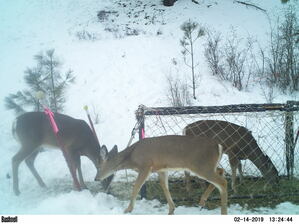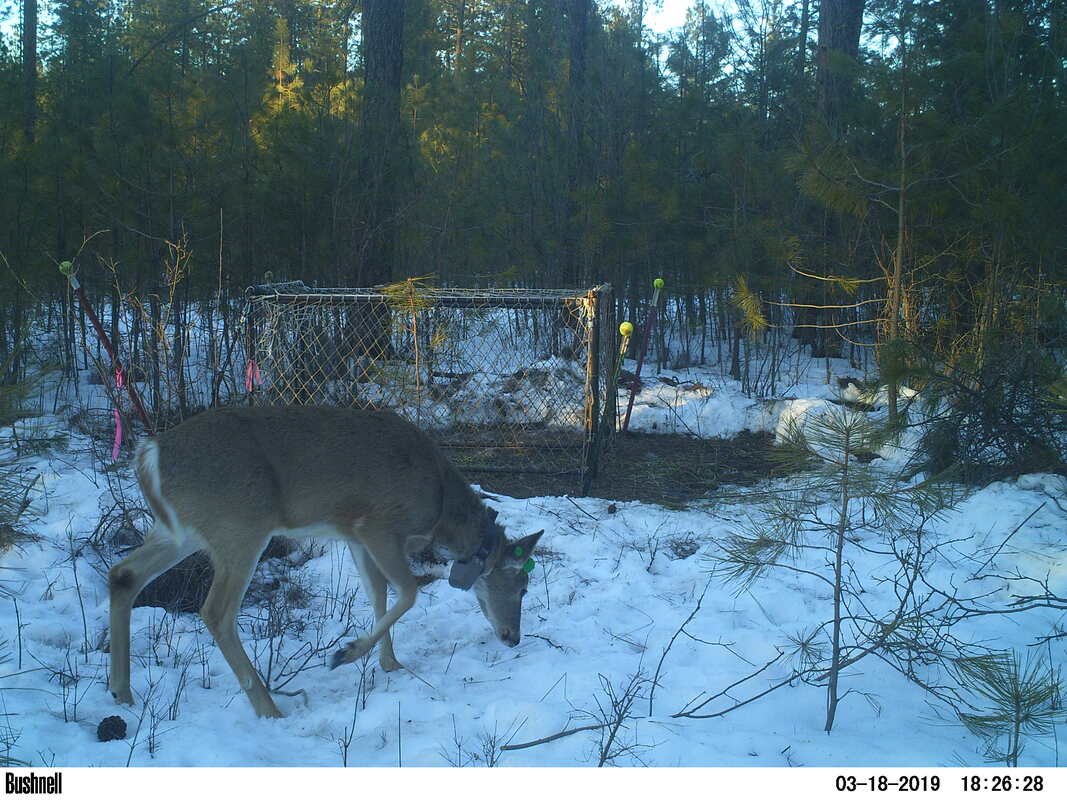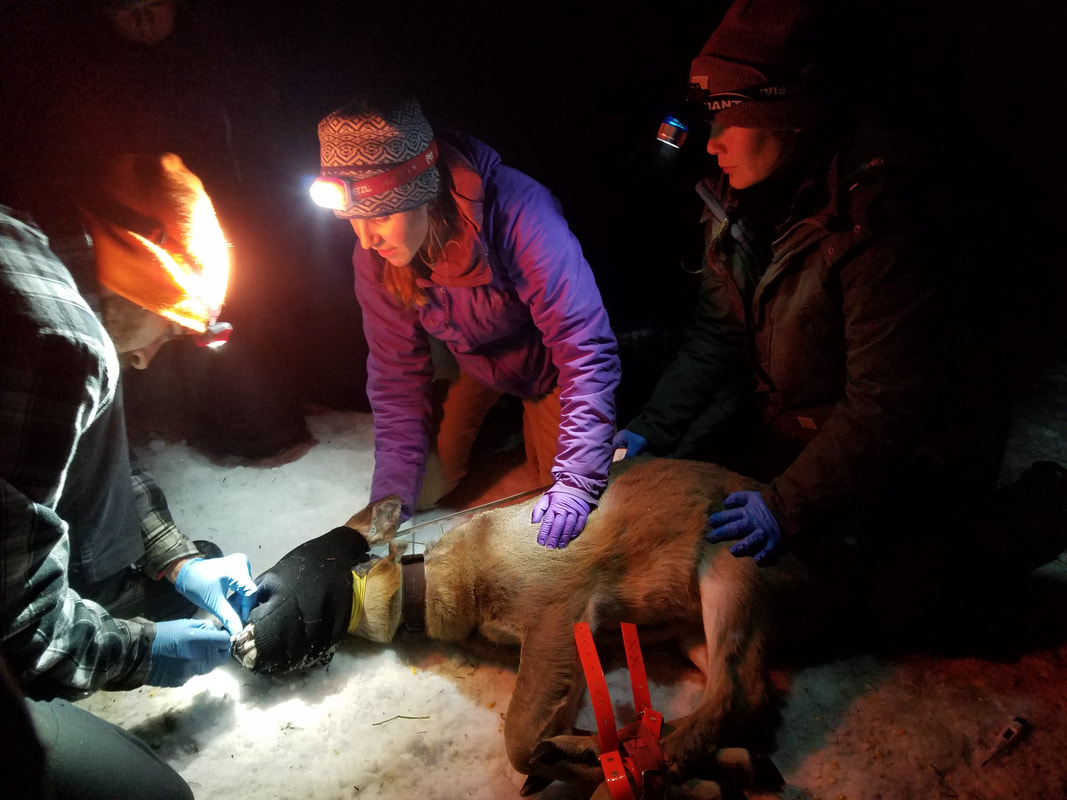|
Spring is a time of transition at the WA Predator-Prey Project. After spending the winter collaring white-tailed deer in northeastern Washington, I’m back in the lab in Seattle. Every few mornings, I log into my computer to view the current locations of the deer we’ve captured and fitted with GPS collars this winter. A small colored dot represents each deer, resembling pushpins pressed into a map on a corkboard. Every day, the GPS collars record their locations and beam that information to us via satellite. Day-by-day, the dots creep across the map of northern Washington, plotting the path of each animal as they transition from winter ranges to summer habitats. It’s a rewarding feeling, seeing these data stream in, after a winter of grueling but productive field days to deploy these collars. Winter means capture season in the world of cervid research. As the snow piles up in the high country, deer move onto winter ranges where forage is more available and movement is easier. These are the areas we target for capture efforts. This winter, the WPPP focused on deploying more collars on white-tailed deer to improve our understanding of the factors influencing their movement and population dynamics. Our efforts paid off. Over 80 days, we collared 65 white-tailed deer does and 23 white-tailed deer fawns, averaging more than one deer collared per day of effort. Because the survival of bucks has less of an influence on deer population dynamics, we released them when they were captured. Luckily for us, they had also shed their antlers first. Primarily, we catch deer using clover traps. These are large, box-shaped traps specifically designed to catch deer. The traps have padded metal frames and soft netting sides and tops. Once a deer is in the trap, we collapse the trap frame like a cardboard box flattened for the recycling bin, allowing its soft net sides to contain the deer so we can restrain and then collar it. Traps are propped open on one end and baited at the other to attract deer. A hook holds the door open until deer enter the trap to feed, tripping a wire, which pulls the hook and drops the door. It’s a simple but effective system. We bait outside the traps with alfalfa and apples to attract deer to the site, and lay grain and alfalfa inside the trap to entice deer in. Deer aren’t the only animals that visited our traps, and finding the occasional surprise turkey inside a trap left our whole field crew laughing. Fortunately, larger bodied ungulates like moose and elk are too big to enter these traps. During a capture we fit deer with a GPS collar and record data about that animal. We collect and test blood to determine pregnancy (important for understanding population dynamics), examine body condition, take morphometric measurements, and attach ear tags so we can recognize individual animals from a distance. Once we finish the workup, deer are released, and we can remotely track their movement and survival. Come June, we'll return to these marked individuals to try and collar their fawns (see my previous post), allowing us to follow the next cohort of individuals. Until then, it's time to catch up in the office and watch the dots creep across the map. - Taylor Ganz
3 Comments
|




 RSS Feed
RSS Feed
